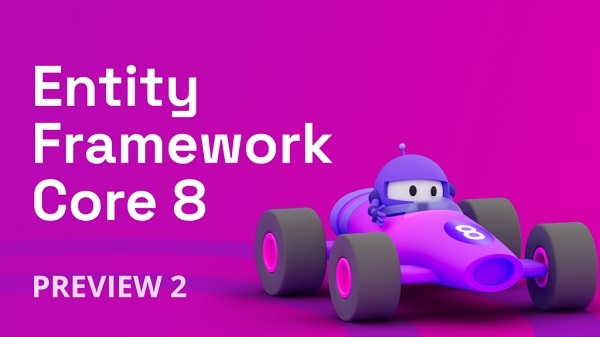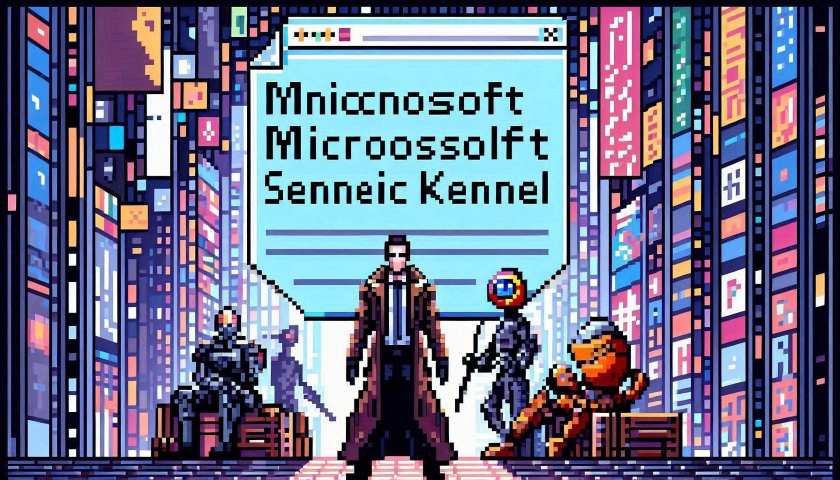
by Joche Ojeda | May 15, 2024 | C#, dotnet, Linux, Ubuntu, WSL
Hello, dear readers! Today, we’re going to talk about something called the Windows Subsystem for Linux, or WSL for short. Now, don’t worry if you’re not a tech wizard – this guide is meant to be approachable for everyone!
What is WSL?
In simple terms, WSL is a feature in Windows that allows you to use Linux right within your Windows system. Think of it as having a little bit of Linux magic right in your Windows computer!
Why Should I Care?
Well, WSL is like having a Swiss Army knife on your computer. It can make certain tasks easier and faster, and it can even let you use tools that were previously only available on Linux.
Is It Hard to Use?
Not at all! If you’ve ever used the Command Prompt on your Windows computer, then you’re already halfway there. And even if you haven’t, there are plenty of easy-to-follow guides out there to help you get started.
Do I Need to Be a Computer Expert to Use It?
Absolutely not! While WSL is a powerful tool that many developers love to use, it’s also quite user-friendly. With a bit of curiosity and a dash of patience, anyone can start exploring the world of WSL.
As a DotNet developer, you might be wondering why there’s so much buzz around the Windows Subsystem for Linux (WSL). Let’s dive into the reasons why WSL could be a game-changer for you.
- Seamless Integration: WSL provides a full-fledged Linux environment right within your Windows system. This means you can run Linux commands and applications without needing a separate machine or dual-boot setup.
- Development Environment Consistency: With WSL, you can maintain consistency between your development and production environments, especially if your applications are deployed on Linux servers. This can significantly reduce the “it works on my machine” syndrome.
- Access to Linux-Only Tools: Some tools and utilities are only available or work better on Linux. WSL brings these tools to your Windows desktop, expanding your toolkit without additional overhead.
- Improved Performance: WSL 2, the latest version, runs a real Linux kernel inside a lightweight virtual machine (VM), which leads to faster file system performance and complete system call compatibility.
- Docker Support: WSL 2 provides full Docker support without requiring additional layers for translation between Windows and Linux, resulting in a more efficient and seamless Docker experience.
In conclusion, WSL is not just a fancy tool; it’s a powerful ally that can enhance your productivity and capabilities as a DotNet developer.

by Joche Ojeda | May 15, 2024 | Data Synchronization, EfCore
I’m happy to announce the new version of SyncFramework for EfCore, targeting net8.0 and referencing EfCore 8 nugets as follow
- EfCore Postgres Version: 8.0.4
- EfCore PomeloMysql Version: 8.0.2
- EfCore Sqlite Version: 8.0.5
- EfCore SqlServer Version: 8.0.5
You can download the new versions from Nuget.org and check the repo here
Happy synchronization everyone!!!!

by Joche Ojeda | May 14, 2024 | C#, Data Synchronization, dotnet
Hello there! Today, we’re going to delve into the fascinating world of design patterns. Don’t worry if you’re not a tech whiz – we’ll keep things simple and relatable. We’ll use the SyncFramework as an example, but our main focus will be on the design patterns themselves. So, let’s get started!
What are Design Patterns?
Design patterns are like blueprints – they provide solutions to common problems that occur in software design. They’re not ready-made code that you can directly insert into your program. Instead, they’re guidelines you can follow to solve a particular problem in a specific context.
SOLID Design Principles
One of the most popular sets of design principles is SOLID. It’s an acronym that stands for five principles that help make software designs more understandable, flexible, and maintainable. Let’s break it down:
- Single Responsibility Principle: A class should have only one reason to change. In other words, it should have only one job.
- Open-Closed Principle: Software entities should be open for extension but closed for modification. This means we should be able to add new features or functionality without changing the existing code.
- Liskov Substitution Principle: Subtypes must be substitutable for their base types. This principle is about creating new derived classes that can replace the functionality of the base class without breaking the application.
- Interface Segregation Principle: Clients should not be forced to depend on interfaces they do not use. This principle is about reducing the side effects and frequency of required changes by splitting the software into multiple, independent parts.
- Dependency Inversion Principle: High-level modules should not depend on low-level modules. Both should depend on abstractions. This principle allows for decoupling.
Applying SOLID Principles in SyncFramework
The SyncFramework is a great example of how these principles can be applied. Here’s how:
- Single Responsibility Principle: Each component of the SyncFramework has a specific role. For instance, one component is responsible for tracking changes, while another handles conflict resolution.
- Open-Closed Principle: The SyncFramework is designed to be extensible. You can add new data sources or change the way data is synchronized without modifying the core framework.
- Liskov Substitution Principle: The SyncFramework uses base classes and interfaces that allow for substitutable components. This means you can replace or modify components without affecting the overall functionality.
- Interface Segregation Principle: The SyncFramework provides a range of interfaces, allowing you to choose the ones you need and ignore the ones you don’t.
- Dependency Inversion Principle: The SyncFramework depends on abstractions, not on concrete classes. This makes it more flexible and adaptable to changes.
And that’s a wrap for today! But don’t worry, this is just the beginning. In the upcoming series of articles, we’ll dive deeper into each of these principles. We’ll explore how they’re applied in the source code of the SyncFramework, providing real-world examples to help you understand these concepts better. So, stay tuned for more exciting insights into the world of design patterns! See you in the next article!
Related articles
If you want to learn more about data synchronization you can checkout the following blog posts:
- Data synchronization in a few words – https://www.jocheojeda.com/2021/10/10/data-synchronization-in-a-few-words/
- Parts of a Synchronization Framework – https://www.jocheojeda.com/2021/10/10/parts-of-a-synchronization-framework/
- Let’s write a Synchronization Framework in C# – https://www.jocheojeda.com/2021/10/11/lets-write-a-synchronization-framework-in-c/
- Synchronization Framework Base Classes – https://www.jocheojeda.com/2021/10/12/synchronization-framework-base-classes/
- Planning the first implementation – https://www.jocheojeda.com/2021/10/12/planning-the-first-implementation/
- Testing the first implementation – https://youtu.be/l2-yPlExSrg
- Adding network support – https://www.jocheojeda.com/2021/10/17/syncframework-adding-network-support/

by Joche Ojeda | Apr 29, 2024 | Semantic Kernel
Welcome to the fascinating world of artificial intelligence (AI)! You’ve probably heard about AI’s incredible potential to transform our lives, from smart assistants in our homes to self-driving cars. But have you ever wondered how all these intelligent systems communicate and work together? That’s where something called “Semantic Kernel Connectors” comes in.
Imagine you’re organizing a big family reunion. To make it a success, you need to coordinate with various family members, each handling different tasks. Similarly, in the world of AI, different parts need to communicate and work in harmony. Semantic Kernel Connectors are like the family members who help pass messages and coordinate tasks to ensure everything runs smoothly.
These connectors are a part of a larger system known as the Semantic Kernel framework. They act as messengers, allowing different AI models and external systems, like databases, to talk to each other. This communication is crucial because it lets AI systems perform complex tasks, such as sending emails or updating records, just like a helpful assistant.
For developers, these connectors are a dream come true. They make it easier to create AI applications that can understand and respond to us just like a human would. With these tools, developers can build more sophisticated AI agents that can automate tasks and even learn from their interactions, here is a list of what you get out of the box.
Core Plugins Overview
- ConversationSummaryPlugin: Summarizes conversations to provide quick insights.
- FileIOPlugin: Reads and writes to the filesystem, essential for managing data.
- HttpPlugin: Calls APIs, which allows the AI to interact with web services.
- MathPlugin: Performs mathematical operations, handy for calculations.
- TextMemoryPlugin: Stores and retrieves text in memory, useful for recalling information.
- TextPlugin: Manipulates text strings deterministically, great for text processing.
- TimePlugin: Acquires time of day and other temporal information, perfect for time-related tasks.
- WaitPlugin: Pauses execution for a specified amount of time, useful for scheduling.
So, next time you ask your smart device to play your favorite song or remind you of an appointment, remember that there’s a whole network of AI components working together behind the scenes, thanks to Semantic Kernel Connectors. They’re the unsung heroes making our daily interactions with AI seamless and intuitive.
Isn’t it amazing how far technology has come? And the best part is, we’re just getting started. As AI continues to evolve, we can expect even more incredible advancements that will make our lives easier and more connected. So, let’s embrace this journey into the future, hand in hand with AI.

by Joche Ojeda | Apr 28, 2024 | A.I
Introduction to Semantic Kernel
Hey there, fellow curious minds! Let’s talk about something exciting today—Semantic Kernel. But don’t worry, we’ll keep it as approachable as your favorite coffee shop chat.
What Exactly Is Semantic Kernel?
Imagine you’re in a magical workshop, surrounded by tools. Well, Semantic Kernel is like that workshop, but for developers. It’s an open-source Software Development Kit (SDK) that lets you create AI agents. These agents aren’t secret spies; they’re little programs that can answer questions, perform tasks, and generally make your digital life easier.
Here’s the lowdown:
- Open-Source: Think of it as a community project. People from all walks of tech life contribute to it, making it better and more powerful.
- Software Development Kit (SDK): Fancy term, right? But all it means is that it’s a set of tools for building software. Imagine it as your AI Lego set.
- Agents: Nope, not James Bond. These are like your personal AI sidekicks. They’re here to assist you, not save the world (although that would be cool).
A Quick History Lesson
About a year ago, Semantic Kernel stepped onto the stage. Since then, it’s been striding confidently, like a seasoned performer. Here are some backstage highlights:
- GitHub Stardom: On March 17th, 2023, it made its grand entrance on GitHub. And guess what? It got more than 17,000 stars! (Around 18.2. right now) That’s like being the coolest kid in the coding playground.
- Downloads Galore: The C# kernel (don’t worry, we’ll explain what that is) had 1000000+ NuGet downloads. It’s like everyone wanted a piece of the action.
- VS Code Extension: Over 25,000 downloads! Imagine it as a magical wand for your code editor.
And hey, the .Net kernel even threw a party—it reached a 1.0 release! The Python and Java kernels are close behind with their 1.0 Release Candidates. It’s like they’re all graduating from AI university.
Why Should You Care?
Now, here’s the fun part. Why should you, someone with a lifetime of wisdom and curiosity, care about this?
- Microsoft Magic: Semantic Kernel loves hanging out with Microsoft products. It’s like they’re best buddies. So, when you use it, you get to tap into the power of Microsoft’s tech universe. Fancy, right? Learn more
- No Code Rewrite Drama: Imagine you have a favorite recipe (let’s say it’s your grandma’s chocolate chip cookies). Now, imagine you want to share it with everyone. Semantic Kernel lets you do that without rewriting the whole recipe. You just add a sprinkle of AI magic! Check it out
- LangChain vs. Semantic Kernel: These two are like rival chefs. Both want to cook up AI goodness. But while LangChain (built around Python and JavaScript) comes with a full spice rack of tools, Semantic Kernel is more like a secret ingredient. It’s lightweight and includes not just Python but also C#. Plus, it’s like the Assistant API—no need to fuss over memory and context windows. Just cook and serve!
So, my fabulous friend, whether you’re a seasoned developer or just dipping your toes into the AI pool, Semantic Kernel has your back. It’s like having a friendly AI mentor who whispers, “You got this!” And with its growing community and constant updates, Semantic Kernel is leading the way in AI development.
Remember, you don’t need a PhD in computer science to explore this—it’s all about curiosity, creativity, and a dash of Semantic Kernel magic. ?✨
Ready to dive in? Check out the Semantic Kernel GitHub repository for the latest updates




